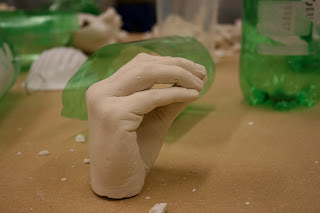We were given a research project of Structure.
Structure - Build. Support.Organise
Research Questions
Why is structure important and what does it allow us to do?
What are the values and material of structure?
Is there a predetremined hierarchy of needs/goals that guarantee a successful structure?
I think structure is the framework which supports and organises its content, structure is often derived from experimentation and follows previous successful formulas. It can be both man made and natural.
We were told to go away an explore what structure we found interesting and collate primary and secondary forms of research. I picked dramatic structure and starting investigating what models there were already out there for dramatic structure. As they told us not to think about an end concept I looked at dramatic structure deliberately not thinking of design in mind.
"Dramatic structure is the organisation of conflict between characters in their world" Julia Keefer 2002
Dramatic Structure is found in plays, books, films, songs, and advertisements. First of all I looked at the history of how dramatic structre has been defined in Theatre. The mot famous of theorists was Aristotle who decribe the structure of needing the following:
A Beginning
A Middle
An End
Freytag theorised about dramatic structure developing the Freyatg's Triangle.
Starting with an incentive moment, then a conflict being introduced leading to a climax resulting in the plot unravelling and then finally ending with a resolution.
Although alot of works follow the traditonal model there are contemporary writers/directors who challenge them. It is now quite common for plays and films not to resolve by the end. I have seen plays that do not even have a climax, the writing being more of a stream of conciousness. I'm not sure if pieces without climax should be called Drama though one could argue that merely the presence of an audience and a platform could constitute as dramatic.
Brecht famously challenged the traditional model, though he didn't manage to intergrate his theories fully in his pieces. He set to break the the bourgeois convention of the fourth wall. To simplify his very complex views he felt plays should make the audience think not feel.
“Today when human character must be understood as the 'totality of all social conditions' the epic form is the only one that can comprehend all the processes, which could serve the drama as materials for a fully representative picture of the world.”
(Brecht's comment, 1931, in
The Threepenny Opera)
“...the epic poet presents the event as totally past, while the dramatic poet presents it as totally present.”
The epic invites calm, detached contemplation and judgement; the dramatic overwhelms reason with passion and emotion, the spectator sharing the actor's experiences.
Brecht criticises what he calls “Culinary theatre”. This is theatre which merely gives an experience, mental refreshment as a meal is a bodily restorative. Brecht despises theatre which provides mental foodstuffs but makes no difference to audience. He believes that the audience should be made not to feel, but to think. (Note that Brecht supposes these two to be in opposition to each other - but this need not be so: Shakespeare at his best can challenge the head and the heart.)
Dramatic theatre presents events:
- from the hero's viewpoint (distorting judgement,) and
- as happening now (preventing calm detachment.)
To counter this the illusion must be broken. Theatre must do this continually.
And, therefore, the audience must be made aware that events are not present events (happening now), but past events being represented as narrative, with commentary provided to encourage our own reflection. This is not unlike the experience of reading a book with critical notes in the margin, or as if a novelist supplied his own comment on a page facing that bearing the narrative. Some modern anti-novelists have done this.
The audience is intended to sit back, relax (hence Brecht's wish for smoking!) and reflect, as did hearers of bards in classical Greece or Anglo-Saxon England. The theatre of illusion creates a spurious present, pretending things are happening now. But the epic theatre is historical: the audience is continually reminded that epic theatre gives a report of events.
To discourage audience from identifying with character and so losing detachment, the action must continually be made strange, alien, remote, separate. To do this, the director must use any devices that preserve or establish this distancing.
http://www.teachit.co.uk/armoore/drama/brecht.htm
I do not necessarily agree that something can not make people feel and think at the same time. Maybe I need to look at the differences between Brecht and Freytag to define my own opinion of what dramatic theory looks like. From my research I think the main differences are:
Brecht Freytag
Detachment Attachment
Past not present Action in the present
No fourth wall Fourth Wall
Narrative Suspense of belief
History Experience
The predetermined hierarchy of needs I think for comes down to just an audience and a platform.
I have no idea how to translate this in 3D as yet!! But I think I will try out combinations of the above.
For assistance in thinking in 3D, I brainstormed words that would relate to both dramatic structure and design to trigger inspiration.
Reveal
Suspend
Suspense
Spectator
Audience
Transport
Interaction
Detachment
Illusion
Mask
Frame
Unfold
Box
Conflict
Contrast
Vivid
Moving
Striking














































